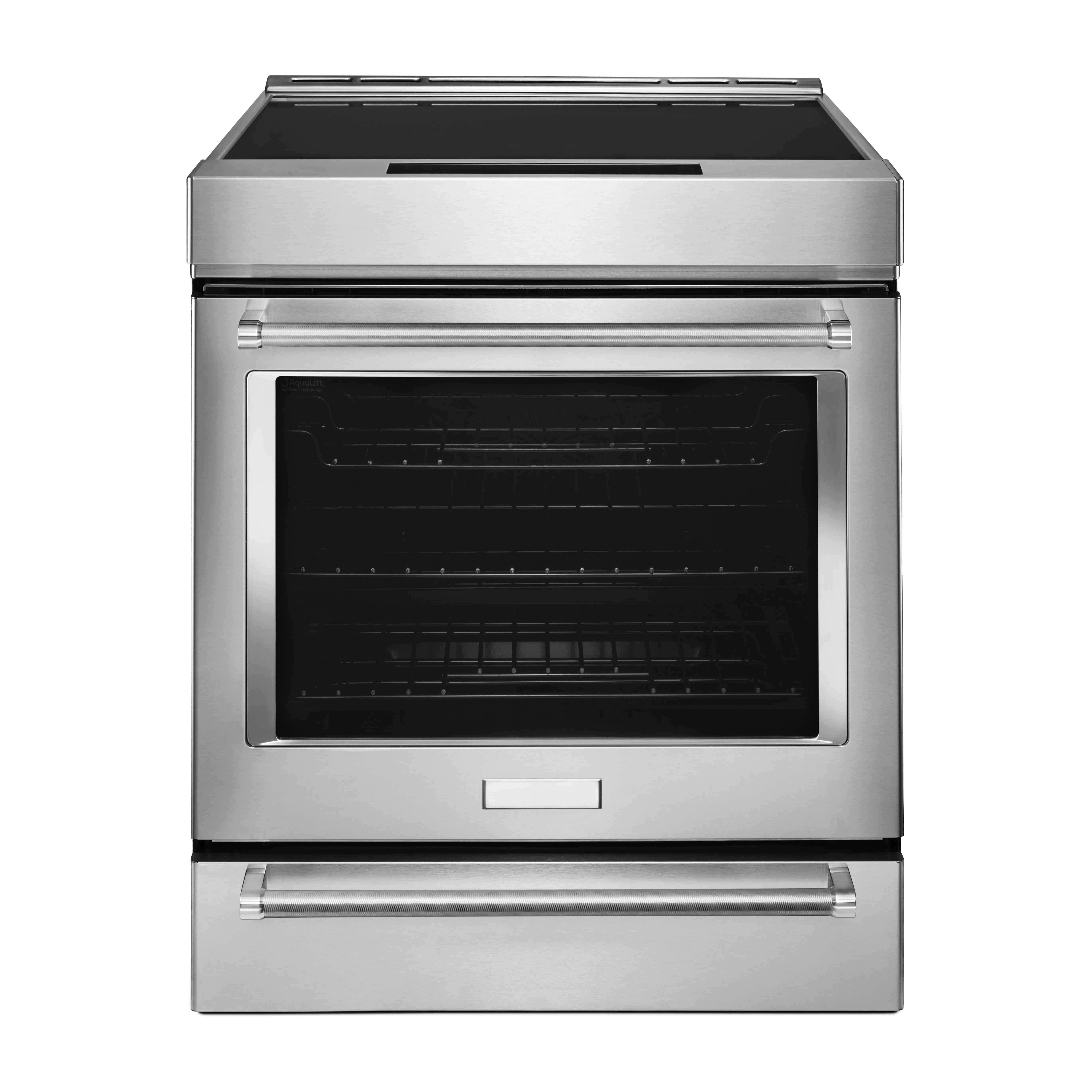Take a look at the image above. While most stoves have a storage drawer for pots and pans at the bottom, some models offer something very helpful for people who just love food and aspiring chefs alike.
On the picture above, the drawer at the bottom of the range is actually a warming drawer. While warming your plates before serving food is a common use, it can potentially have numerous benefits as we’ll see below.
Also referred to as a plate warmer or baking drawer, various options are available that provide increasing functionality depending on which model you buy.
5 uses for a warming drawer in your kitchen
5 great uses for a warming drawer include the following:
- Heat plates and other crockery
- Keeps food warm
- Allows cooking of multiple warm dishes simultaneously
- Proving drawer for dough
- Slow cooking option
Here are some additional details on each of the five great uses for a warming tray. Having a warming drawer in our kitchen, I can tell you firsthand that the first reason alone makes it worth the money in our family’s opinion.
Heat plates and other crockery
One of the most useful reasons for any warming drawer is to heat plates before putting hot food on it. You’re probably already aware of how putting warmed food on a cool plate quickly reduces the temperature of the food.
Plus there is just something different between holding a cold ceramic plate and holding a warmed one in your hands. That’s why all-you-can-eat restaurants often stack plates inside warmers.
Not only does it help to keep the food warm longer, it’s just nicer to hold a warmed plate.
With a variety of settings, you can even choose how warm or hot your plates are. If you crank the warming drawer setting up to the max, you might find that you need to carry the plates to the table with oven gloves.
Beats carrying a cold plate every day of the week.
Keeps food warm
Depending on the size of your warming tray, you can often place several large dinner plates or a platter in the warming drawer with hot food on it. Turn the setting to the desired level and you can keep food warm until it’s ready to be eaten.
Perhaps you have a household member who needs some time to eat. Maybe they’re waiting on you and want to keep your food warm.
Maybe you’re ready to eat the main course and want to keep a ready-to-eat dessert warm at the same time.
Perhaps you want to turn your energy sucking oven off but keep the remaining prepared food warm in case someone wants seconds. You can save energy while also ensuring you won’t dry your food out.
Regardless, you can easily keep both your plates and the food warm and not have to worry about eating cold food or using the microwave to reheat it. Even on a lower setting, warming drawers make it simple.
Allows cooking of multiple warm dishes simultaneously
Similar to the last use but for a different reason: How many times have you had several hot dishes being made but ended up with one dish being fully cooked while waiting for another to be ready?
Maybe you’re having people over or just have a big family with several dishes planned simultaneously.
Or perhaps you need to use your oven for several dishes and can’t cook them all at once with the space you have.
So you either have to reheat the first dish in the microwave or leave it in the oven and risk it overcooking.
If you have several dishes being prepared and need to keep one or more warm, you can do so with your warming drawer.
Proving drawer for dough
Also known as a proofing drawer, some ovens have proving capabilities. The process of “proving” or “proofing” is when baking dough is allowed to rise properly in a suitable environment and the drawer allows this.
By enclosing the dough in a draft-free zone and warming it with a suitably low level of heat, your baking dough can rise as needed. This results in a dough that helps you ultimately achieve the best possible taste and texture of your baked goods such as bread.
A proving drawer is not standard on all warming drawers but certain models do offer it.
Slow cooking option
A slow cooking option is also available on some warming drawer models. Slow cooking is a process that is exactly as it sounds: A dish such as stew or brisket is cooked slowly – at a lower temperature but for a longer period of time – to produce a taste that is different from one produced by higher temperature cooking.
If you’ve used a crock pot before, you know the result I’m talking about.
Some models offer a Lo and High setting that typically requires 4 – 5 hours and 8 – 10 hours of cooking time respectively, depending on the dish.


